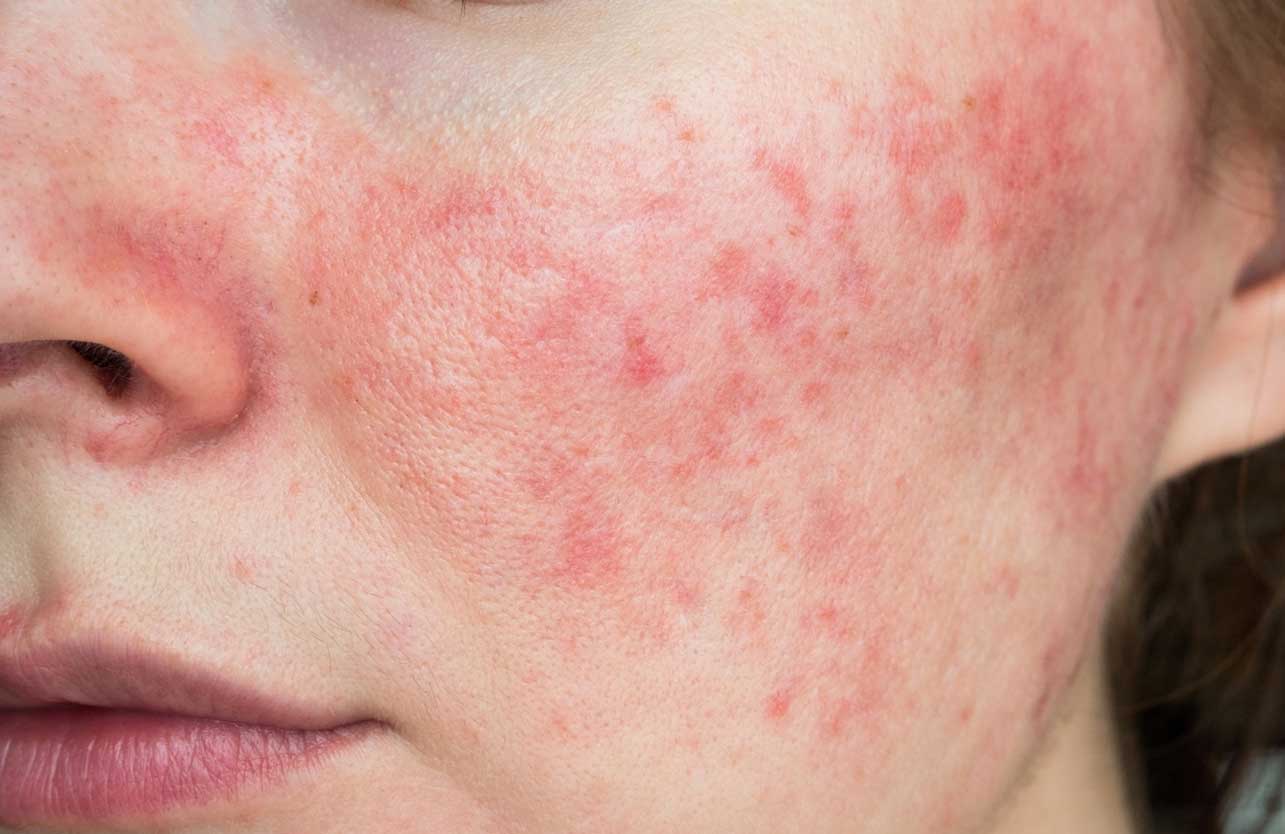Rosacea: Symptoms and Treatment Methods
What is Rosacea?
Rosacea is a chronic skin condition characterized by facial redness and small, acne-like bumps. It commonly affects middle-aged adults and is more prevalent in individuals with lighter skin tones. Although the exact cause of rosacea is unclear, genetic factors, vascular issues, and immune system abnormalities may contribute to its development.
Symptoms of Rosacea
Rosacea symptoms can vary among individuals but commonly include:
- Persistent facial redness and sensitivity
- Small red bumps on the cheeks, nose, chin, and forehead
- Burning or stinging sensations on the skin
- Eye redness and irritation (ocular rosacea)
- Thickened skin on the nose (rhinophyma, seen in advanced stages)
Factors Triggering Rosacea
Certain triggers may exacerbate rosacea symptoms:
- Excessive exposure to sunlight
- Stress and emotional factors
- Hot beverages, alcohol, and spicy foods
- Hot baths or saunas
- Harsh cosmetic products
- Extreme hot or cold weather conditions
Treatment Methods for Rosacea
Rosacea treatments aim to control symptoms and enhance quality of life. Treatment typically requires a long-term, individualized approach.
Topical Treatments
- Creams or gels containing metronidazole
- Azelaic acid
- Ivermectin creams
Systemic Treatments
- Doxycycline and other antibiotics
- Isotretinoin (for severe cases)
Laser and Light Therapies
- Vascular lasers to reduce redness
- Intense pulsed light (IPL) treatments
Home Care Recommendations for Rosacea
- Use sunscreen regularly
- Cleanse the face gently with lukewarm water
- Avoid alcohol-based and perfumed products
- Stay away from trigger foods
- Engage in stress-reducing activities
Recommendations from Dr. Ezgi Özkur for Rosacea Treatment
Dermatology specialist Assoc. Prof. Dr. Ezgi Özkur emphasizes the importance of regular follow-ups and dermatological oversight for rosacea management. With proper diagnosis and suitable treatments, patients can significantly enhance their quality of life.

